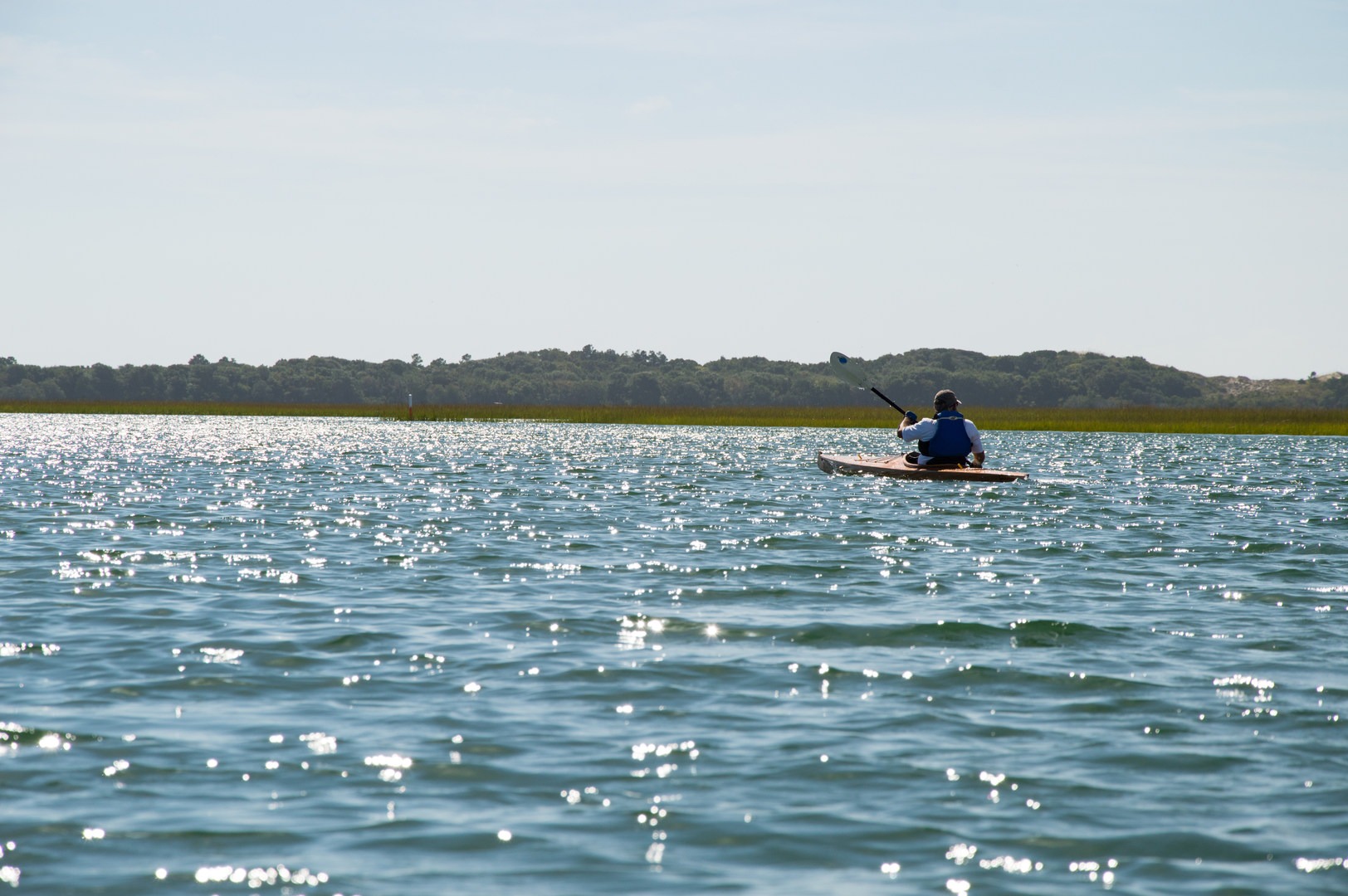You are here
At first glance, Hammocks Beach State Park doesn't look like much. The large parking lot and visitor center looks like it is set up for nothing more than a grassy field and some trees near a residential area. Look just a little farther out at the ocean, however, and you are looking at Hammocks Beach State Park. The park encompasses two large barrier islands, and water routes travel among the marsh and many smaller hammocks between. The state park's ferry and canoe docks on the Intracoastal Waterway provide access to it all.
The ferry typically leaves several times a day from April through October, but the schedule can vary. It does not operate regularly from November through March. The waterways and islands remain open all the time, however, even when ferries are not running or the visitor center is closed. Other options include private boats and paddle craft. You can follow water trails, the ferry route, or navigate your own path. Just be sure to dock somewhere other than the Bear Island ferry landing because it must remain clear. Use a nearby cove or continue around to the beach side.
Beach
The main attraction is Bear Island, which has a nice long beach on the Atlantic side and calm coves on the marsh side. This is where the ferry goes, and passengers need only make a short walk on a trail to reach Bear Island Beach. At the beach access point there is a short boardwalk, a large shade structure, smaller picnic shelters, outdoor showers, potable water, restrooms, and ADA-accessible elevators. During the summer season a concession stand is open.
Nearly 4 miles of white sand grace the shore here, so its easy to find a stretch all to yourself. There is a designated swimming area with lifeguards on duty during the summer. The rest of the beach is open to all activities including fishing, surfing, and paddling. Enjoy sunning, picnicking, and beachcombing anywhere along the shore. If you'll be entering the dunes, be sure to only use pathways between them instead of climbing the sides or trampling vegetation. Stay for a few hours, an entire day, or even overnight. There are designated campsites that can be reached by foot from the ferry or by boat if you have your own.
Water Trails
The park has laid out water trails that cross the Intracoastal Waterway and lead to the islands. Colored posts that are generally easy to follow mark the way. You must consider the tides when paddling here. In general, it is easier to reach the islands with a falling tide and easier to return with a rising tide. However, the many small hammocks make a maze of currents that will work against you here and there. The water is generally calm, but windy days can whip up waves and stronger currents.
- Trout Channel Spur (blue over orange posts, 0.2 mile round trip): This is the short and easy trail, which runs between the ferry dock on Bear Island and the main inlet where Bear Island Water Trail rounds the northeast corner of the island. To paddle this trail only you will need to bring your boat on the ferry.
- Bear Island Trail (white over orange posts, 5.2 miles round trip): This paddle trail differs from the ferry route but leads to Bear Island. It enters a cove on the northeast end where there are some campsites and a sandy pullout that makes an easy walk through the dunes to the beach.
- Huggins Island Trail (yellow over yellow posts, 6.0 miles round trip): A loop around Huggins Island, which requires paddling in choppier water near the main channel of the Bogue Inlet.
Hiking Trails
There is only one designated hiking trail in the park. It is the short nature trail in the woods near the visitor center, a TRACK trail with children's educational signs. Other than this, hiking opportunities are along the beach on Bear Island.
Camping
Bear Island has 14 primitive campsites and two group sites. Advance reservations are recommended, and you must check in at the visitor center to obtain your permit. Most of the sites are along the beach and easy walking distance from the picnic area, which is where the trail from the ferry reaches the beach. Some of the sites are along the sound and are best used by those paddling in rather than riding the ferry. Potable water, outdoor showers, and restrooms are available near the picnic area mid-March through mid-November, but not during the winter. Campers must always bring all their own gear and pack out their own trash. Fires are not permitted.
Pets
Pets are allowed on leash in the mainland area of the park near the visitor center. They are not allowed on the ferry to Bear Island, however. If you bring pets on your own boat, they must remain on a leash at all times and cannot be on the beach near the designated swimming area.
Logistics + Planning
Current Weather: Powered by Dark Sky






























Comments
Sign In and share them.